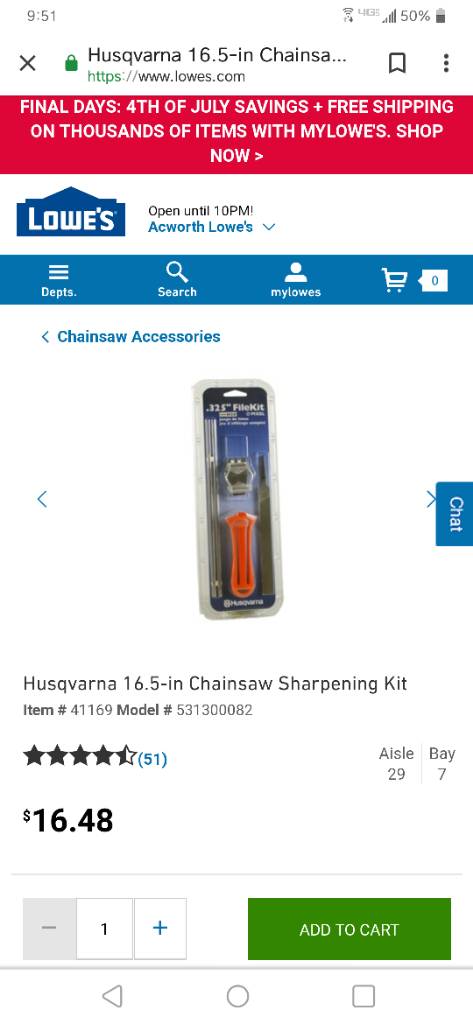This might be ridiculously splitting hairs, but these questions are bugging my ‘OCD brain’ and I would love to get some answers.
For descriptive purposes, let’s assume the bar is clamped in a vice, with the top of the bar horizontal. For each cutting link, the tooth to be filed is on the left and raker is on the right.
Looking at the flat face of the bar, imagine a clock face, with the centre of the clock at the cutting edge of the top-plate of the tooth.
The top of the bar is running parallel to the 3 o’clock-9 o’clock plane. The top plate of the tooth slopes down, towards the 8 o’clock position.
When using a filing gauge like the Oregon style, does one have the plate of the guide resting on the top plate and on the raker, or does one have it resting flat on the top plate, sloping towards the 8 o’clock position?
If it is resting on the top-plate and the raker, because the raker is (presumably) lower than the edge of the top-plate, the guide will slope slightly towards the 4 o’clock position. This will produce a more pronounced hook. More on this later ***
If one has it sloping towards 4 o’clock it will file a deeper hook than if sloping towards the 8 o’clock position.
Is this difference in hook significant, and which is better?
Now, let’s look at direction of pressure. With the guide, I assume (perhaps, incorrectly) one wants to have the pressure somewhere between the 9 o’clock and 7 o’clock direction. One definitely doesn’t want it past the 9 o’clock, because that would lift the guide away from the tooth. What is the optimal direction of the pressure?
What about freehand filing, without a guide? In what direction should the pressure be applied?
*** With each filing of the teeth, the rakers become higher relative to the top plates. If one rests the guide on the rakers, the angle of the guide will differ depending on the height of the rakers relative to the top-plate. With this in mind, if one is going to rest the guide on the rakers, is it better to file the rakers first and then file the teeth? Of course, if one is resting the guide on the top-plate only, the raker heights don’t affect the angle of the guide.
For descriptive purposes, let’s assume the bar is clamped in a vice, with the top of the bar horizontal. For each cutting link, the tooth to be filed is on the left and raker is on the right.
Looking at the flat face of the bar, imagine a clock face, with the centre of the clock at the cutting edge of the top-plate of the tooth.
The top of the bar is running parallel to the 3 o’clock-9 o’clock plane. The top plate of the tooth slopes down, towards the 8 o’clock position.
When using a filing gauge like the Oregon style, does one have the plate of the guide resting on the top plate and on the raker, or does one have it resting flat on the top plate, sloping towards the 8 o’clock position?
If it is resting on the top-plate and the raker, because the raker is (presumably) lower than the edge of the top-plate, the guide will slope slightly towards the 4 o’clock position. This will produce a more pronounced hook. More on this later ***
If one has it sloping towards 4 o’clock it will file a deeper hook than if sloping towards the 8 o’clock position.
Is this difference in hook significant, and which is better?
Now, let’s look at direction of pressure. With the guide, I assume (perhaps, incorrectly) one wants to have the pressure somewhere between the 9 o’clock and 7 o’clock direction. One definitely doesn’t want it past the 9 o’clock, because that would lift the guide away from the tooth. What is the optimal direction of the pressure?
What about freehand filing, without a guide? In what direction should the pressure be applied?
*** With each filing of the teeth, the rakers become higher relative to the top plates. If one rests the guide on the rakers, the angle of the guide will differ depending on the height of the rakers relative to the top-plate. With this in mind, if one is going to rest the guide on the rakers, is it better to file the rakers first and then file the teeth? Of course, if one is resting the guide on the top-plate only, the raker heights don’t affect the angle of the guide.











